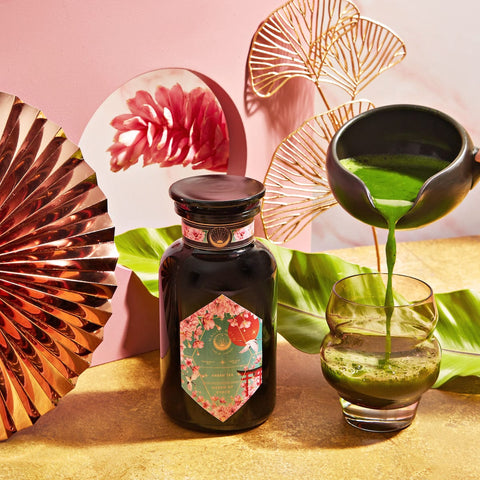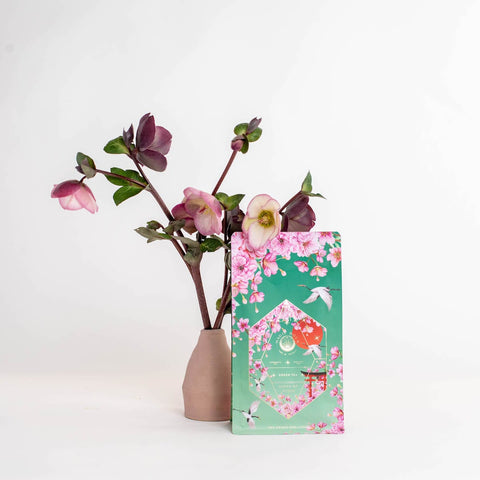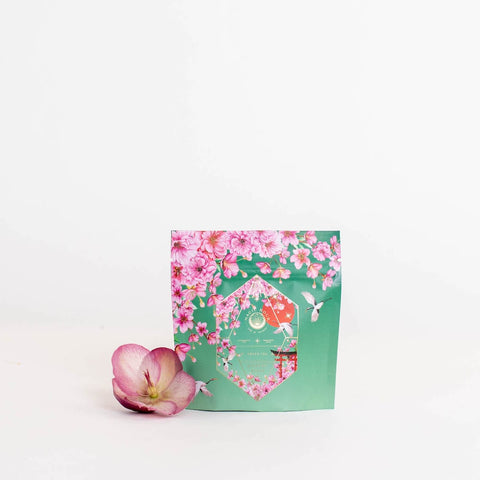



Queen of Kyoto
As you sip this tea, you will be transported to a dreamlike landscape of the Rising Sun, where ancient traditions and natural beauty converge in perfect harmony. Allow yourself to be swept away by the delicate medley of fruit and flower essences, and savor the beauty and complexity of this exquisite tea blend.
Ingredients: Sencha Green Tea from Kyoto, Jasmine Blossoms, Organic Roses, Organic Dried Apricots, Organic Freeze Dried Cherries, Organic Raw Cherry Powder, Natural Flavor Extracts.
Steeping Instructions: Steep 1 heaping teaspoon in 8oz freshly heated 180° spring or filtered water for 2-3 minutes. Sweeten as desired.
About the Japanese Cherry Blossom Festival:
The history of cherry blossom festivals in Japan dates back centuries, with the first recorded cherry blossom festival taking place during the Nara Period (710-794) when the Imperial Court held flower-viewing parties called "hanami" under the blossoming trees.
During the Heian period (794-1185), the custom of hanami spread to the samurai class and commoners, who also began to hold their own flower-viewing parties. By the Edo period (1603-1868), the custom had become firmly established, and cherry blossom festivals were celebrated throughout Japan.
In the early 20th century, the Japanese government began to promote the cherry blossom as a symbol of national identity, and the annual blooming of the trees became a major cultural event. Today, there are hundreds of cherry blossom festivals held throughout Japan, with some of the most famous festivals taking place in Kyoto, Tokyo, and Osaka.
The festivals typically feature food and drink stalls, live music, traditional dance performances, and other cultural events. Many people also take part in "yozakura" (nighttime cherry blossom viewing) when the trees are illuminated, creating a magical and romantic atmosphere. The cherry blossom has become an important symbol of Japan, representing the transience of life, the beauty of nature, and the importance of living in the present moment.